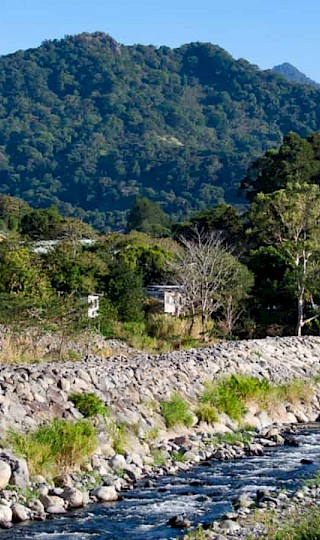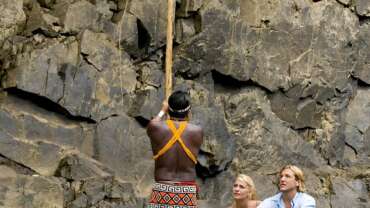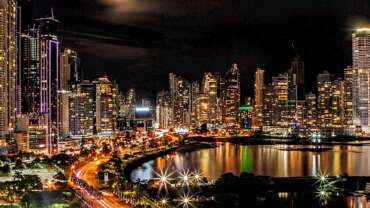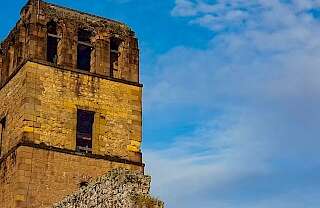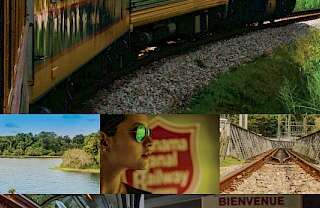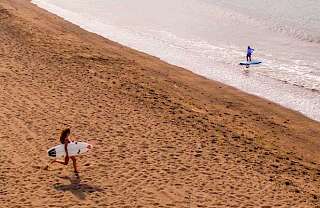Nature & Parks in Panama
In natural beauty, biodiversity and dazzling landscapes, Panama is incomparable. Near the capital you will find different types of habitats, such as the Chagres National Park, Camino de Cruces, Cerro Ancón, the Soberania National Park and Gamboa.
Due to its geographical position, Panama is a resting point on the route of numerous species of birds that migrate from north to south and vice versa.
Iconic Experiences
COIBA NATIONAL PARK
Declared a UNESCO World Heritage Site in 2005, Coiba Marine Park is a marine reserve located off of Panama’s Pacific coast in the Gulf of Chiriquí. Once a penal colony, access to the island was historically limited, allowing much of the area’s natural resources to survive untouched. Today, the marine park boasts some of the greatest biological diversity in the world.
Coiba is a world-class diving destination on the same corridor as the Galapagos Islands, offering access to Bahia Damas Reef, the largest reef on the western coastline of the American continent. A dive there means you’ll have the chance to see manta rays, whales and hammerhead sharks. If you come between December and April, you might just see some of the biggest fish in the ocean, the whale sharks!
Not into diving? You can still experience the local wildlife by taking a whale watching tour, or a hike through the island’s untouched rainforest. Look out for over 147 bird species, as well as monkeys, crocodiles and iguanas. And, if surfing’s your thing, you’ve come to the right place. Coiba’s surrounding beaches offer some of the best, most consistent waves in Central America.
ANCON HILL
Enjoy the best panoramic views of both the capital and the Canal from Ancon Hill, the highest point in Panama City. This is also where you can behold the true essence of Panama: a city enveloped in nature. Ancon Hill is the remnant of the eroded core of an ancient volcano that served as a quarry during the construction of the Canal. Today, it’s completely covered by the rainforest and home to keel-billed toucans, green iguanas, geoffroy’s tamarins and other amazing wildlife.
Ancon Hill is 199 meters (650 feet) from base to summit, and will take you about 30 minutes to hike. When you get to the top, you’ll be able to see the old, rebuilt and modern cities, all from one point—plus views of the Panama bay! Besides the incredible views, a climb to the top means you’ll also get to see the largest flag in the country. The massive flag was installed there in 1979 to celebrate the treaty that returned the Canal Zone to Panama, and has been flying there ever since.
BIOMUSEO
Did you know that the isthmus now known as Panama was formed relatively recently in geologic time—and emerged, quite literally, to change the world? To learn more about Panama’s unique impact on the world’s biodiversity, as well as the country’s commitment to protecting the environment, make sure you make a stop at Biomuseo. The striking and colorful geometric building was designed by renowned architect, Frank Gehry, the mastermind behind iconic buildings around the world, such as the Guggenheim Museum in Bilbao, Spain and the Louis Vuitton Foundation in Paris. When you visit The Biomuseo, you’ll get to see Gehry’s first design in Latin America.
Inside the space, you’ll find 8 galleries: ‘The Showcase of Biodiversity’; ‘The Panamarama’—a 3-level projection of Panama’s ecosystems; ‘Building the Bridge’, which explains how Panama was formed; ‘Worlds Collide’—an exposition on the animals of the region; ‘The Human Path’—where you can learn about the human history of the area; ‘Oceans Divided’—an aquarium; ‘The Living Web’—a 15-meter sculpture; and finally “Panama is the Museum,” an interactive view of the relationship between the cultural and ecological diversity of Panama.
After you check out the permanent and temporary indoor interactive exhibits, venture into the many outdoor spaces such as the Garden of Microdiversity, The Garden of Evolution and The Garden of Crops. While you’re out there, you may even be able to catch a view of ships passing through the Canal and under the Bridge of the Americas.
SANTA FE
Santa Fe sits in the highlands of Veraguas, an ecological paradise, home to a wide variety of animals and plants including orchids. Our rainforest is ideal for backcountry hiking and birdwatching. This beautiful place has over 50 waterfalls to explore, swim, and reconnect with nature.
If you like extreme sports, in Santa Fe you can do activities such as rappelling, mountain biking, among others.
SAN SAN POND SACK
San San Pond Sack is one of the most important wetlands of the Caribbean Mesoamerican coast. Its biological diversity includes migratory birds during most of the year, and important species such as the manatee and four species of sea turtles that nest on its beaches. Its channels and coastal lagoons offer a great variety of landscapes that you have not seen in other areas of the country.
NATIONAL PARKS
It is interesting that a city like Panama that has execcionales natural areas a few kilometers from the center, where you can from sports activities such as hiking trails, fishing, observe birds of the tropical humid forest, make an expedition in the waters of the Lake Gatun, go camping on the Espiritu del Bosque trail in the Soberanía National Park or simply appreciate the scenic beauty of the natural areas bordering the Panama Canal full of colonial history, the railroad and the construction of the Panamanian maritime route El Canal.
BOQUETE
Boquete is a natural setting with cool temperatures that invite you to enjoy its exquisite award-winning delicacy worldwide: coffee. The fluttering and chirping of the birds, calls you to walk the paths while mother nature invades your senses. Its hanging bridges and relaxing walks, its crystal clear waters, and its abundant and diverse flowers become part of your experience in Boquete.
TIERRAS ALTAS
From the impressive Baru Volcano, La Amistad International Park, its coffee producing farms, its incredible agricultural production, its working people and its floral landscapes: Tierras Altas will impress you. Its natural beauty, pleasant and fresh climate, its delicious strawberries, its trout fishing, and the tasting of its coffee with incomparable flavor will impart experiences that will stay in you. Highlands, an ideal destination for adventurers and families.
CENTRO NATURAL PUNTA CULEBRA
Explore and discover the natural world through science at one of the facilities of the Smithsonian Tropical Research Institute in Panama. A trip through the geological, military and natural history of Panama in a spectacular setting just minutes from Panama City. The exhibits on marine life reveal the magnificent biodiversity of the Panamanian coastal ecosystems, the coral reefs of the Caribbean Sea and the Pacific Ocean.
EL CAÑO ARCHAEOLOGICAL PARK
El Caño Archaeological Park shows what Panama’s ancient societies were like before the conquest. The archaeological site, where excavations and studies are still being carried out, includes an extensive necropolis with funerary mounds and a ceremonial center with alignments of basalt columns that were used between the years 700 and 1000 CE. A new site museum presents the most recent archaeological discoveries , which include tombs of chiefs dressed in gold and thousands of pieces in polychrome ceramics. The largest tomb contained at least 25 bodies: the most important was covered with pieces of gold and copper, and pieces carved in stone, bone and ivory. The abundance and quality of the finds have made El Caño the most important archaeological site in Panama.
SOBERANÍA NATIONAL PARK
Soberanía National Park is the most accessible national park from the city, and protects forests that include some of the most acclaimed sites for bird watching in Panama. It is situated along the Canal and crossed by the Chagres River, and offers excellent opportunities to explore the tropical forest. Its 22,300 hectares are home to more than 500 species of birds, including toucans, hummingbirds, parrots and even the powerful harpy eagle. The trails of Plantation and Pipeline roads are the perfect places to get into the tropical nature of Panama and marvel at its exotic inhabitants, as are the Panama Rainforest Discovery Center and the Summit Municipal Park.
BARRO COLORADO ISLAND
Barro Colorado Island is famous for being the most intensely studied tropical forest in the world. It is an artificial island of 1,560 hectares that was created during the construction of the Panama Canal. When the Chagres River was dammed to form Gatún Lake, a vast valley was flooded and one of its hills was cut off by water and became Barro Colorado Island. In 1923, at the request of a group of scientists, this island was declared a Biological Reserve, the first Tropical Rainforest Reserve in America, and a research laboratory was installed. In 1946, Barro Colorado was turned over to the Smithsonian Tropical Research Institute, and in 1979, five peninsulas were added on the mainland to declare it a Natural Monument. For more than 100 years, thousands of scientific studies have been carried out in Barro Colorado that have helped us better understand the functioning of the world’s tropical ecosystems and the importance of their inhabitants.
ANTON VALLEY
El Valle is the crater of an ancient volcano. At the bottom of this crater, 1,900 feet above sea level, is the town of El Valle. The presence of this village makes it one of the few permanently inhabited volcanic craters in the world. Here it is possible to meet the tiny and unique Panamanian golden frog, an amphibian found nowhere else in the world which is studied and protected in a local scientific center to save it from extinction. Here you can also walk trails through the forest, discover waterfalls and climb the hills that form the edge of the immense crater. From them, you get spectacular panoramic views of the town and the surrounding mountains.
BARU VOLCANO NATIONAL PARK
The Baru Volcano National Park has the highest peak in Panama and is the best place for mountain hiking. The imposing Baru Volcano emerges from the park’s 35,000 acres, exceeding in height all the mountains of the country. Its slopes, from top to bottom, are surrounded by 5 different ecosystems and are crossed by numerous streams. Its trails offer the opportunity to go deep into the cloud forest and to find through the mist the natural inhabitants of the park. At the end of the route, there is the cusp of the volcano: 11,400 feet above sea level. The summit is the perfect place to try to get a view of both oceans, camp under the stars and marvel at a glorious sunrise over the clouds, from the rooftop of Panama.
LA AMISTAD INTERNATIONAL PARK
La Amistad International Park is an extensive jungle located at the top of the central mountain range and is home to the mythical resplendent quetzal. Its 991,000 acres are shared by Panama and Costa Rica, through a great international effort to preserve the incredible natural wealth of this jungle. This territory is crisscrossed by mountain trails that go deep into mist-covered forests. This is also home to the endangered tapir and 600 other species of birds. Three indigenous groups, the Naso, Bribri and Ngäbe-Buglé, also live within La Amistad. These groups reside in small towns and maintain a traditional lifestyle, in tune with the exuberant nature of this unique place.
La Amistad International Park was declared a UNESCO World Heritage Site in 1990.
CHAGRES NATIONAL PARK
The Chagres National Park is the forest that shelters the source of the most important river in Panama and is the perfect place for the most daring hikers. Its 309,000 acres are crossed by countless streams and waterfalls, which lead the water to the mighty Chagres River and to Lake Alajuela, formed when a dam was built on the river. Its rugged terrain is crowned with hills and peaks covered in cloud forest.
One of them is the 3,300 feet tall Cerro Jefe, which offers spectacular views of the Canal and, with a bit of luck, the Atlantic and Pacific oceans. This forest also holds the remains of 30 miles of the Camino Real, the colonial route where gold and silver were carried through the Isthmus during the 16th, 17th and 18th centuries.



